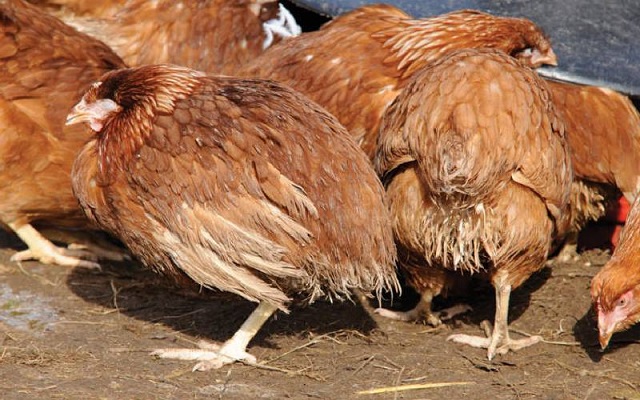
Amuru, Uganda | THE INDEPENDENT | A suspected outbreak of coccidiosis has claimed lives of hundreds of poultry birds in Amuru district leaving farmers counting losses.
The disease has for the past one week been reported in the areas of Kal A, Kal B, Kal Centre, Labika and Lagak in Pabbo sub county and Pabbo town council.
Over two hundred chickens have reportedly died of the disease from the area. The poultry birds have presented with decreased growth rate to a high percentage of visibly sick birds, severe diarrhoea and high mortality.
Some also had decreased water and feed consumption, weight loss, development of culls and decreased egg production which was eventually accompanied by deaths.
Scovia Lanyero, a resident of Labika village says that the disease has killed nine of her chickens.
Lanyero explained that she had planned to sell the chickens each at 25,000 Shillings to raise money for her school fees immediately school resumes operation.
John Bosco Oloya, another resident of Labika village in Pabbo town council says that he has lost 16 mature cocks to the disease yet he had planned to sell them off to meet his household needs.
Based on the signs and symptoms, Oloya said he contacted an agricultural extension worker in the area who told him that his chickens had suffered and died of coccidiosis.
Oloya disclosed that they have been trying to treat the sick chickens with a local bitter herb locally known as ‘Labwori’, but it never gave healings to the already infected chickens.
Another victim is Francis Kidega who has also lost twenty-six chickens to the disease. He is now appealing to the agricultural department in the district to offer guidance on how farmers can treat the disease.
However, Tito Okello, the local chairperson for Kal centre in Pabbo sub county disclosed that several poultry farmers in his area have vaccinated their chickens against the disease, something he noted that has reduced the mortality rate in the infected chickens.
Richard Sejjoba, an agriculturalist at Agrithon-Vet Supplies has advised the farmers to isolate infected chickens and burry or burn the carcasses of the dead ones to prevent further transmission.
He also urged farmers to practice indoor poultry farming since the disease spreads from one chicken to another through body contact, feeding and water points.
*****
URN
 The Independent Uganda: You get the Truth we Pay the Price
The Independent Uganda: You get the Truth we Pay the Price


